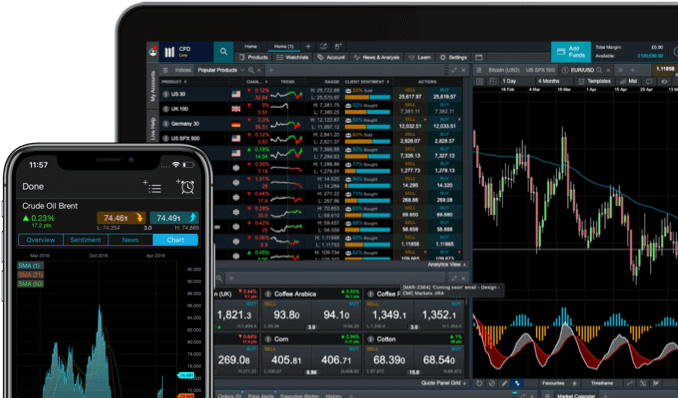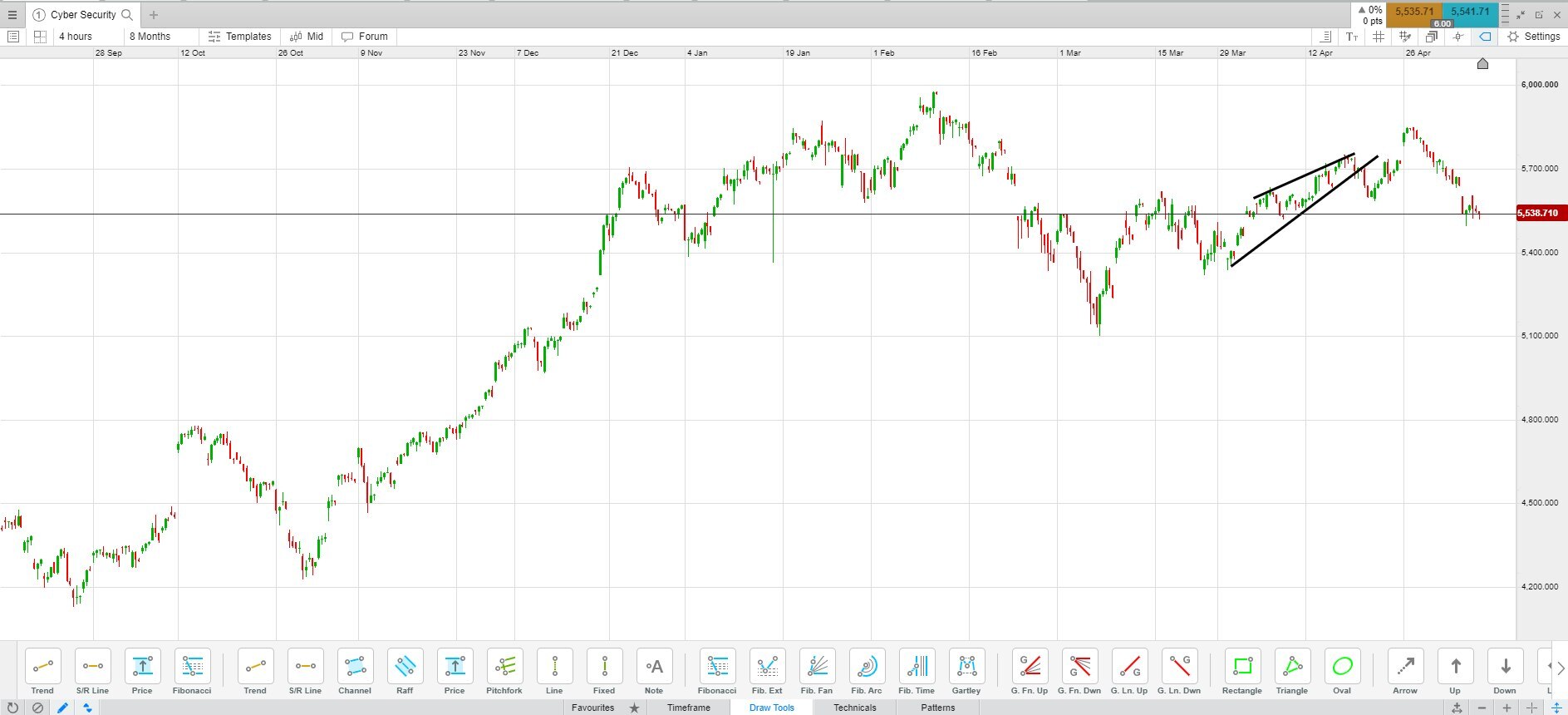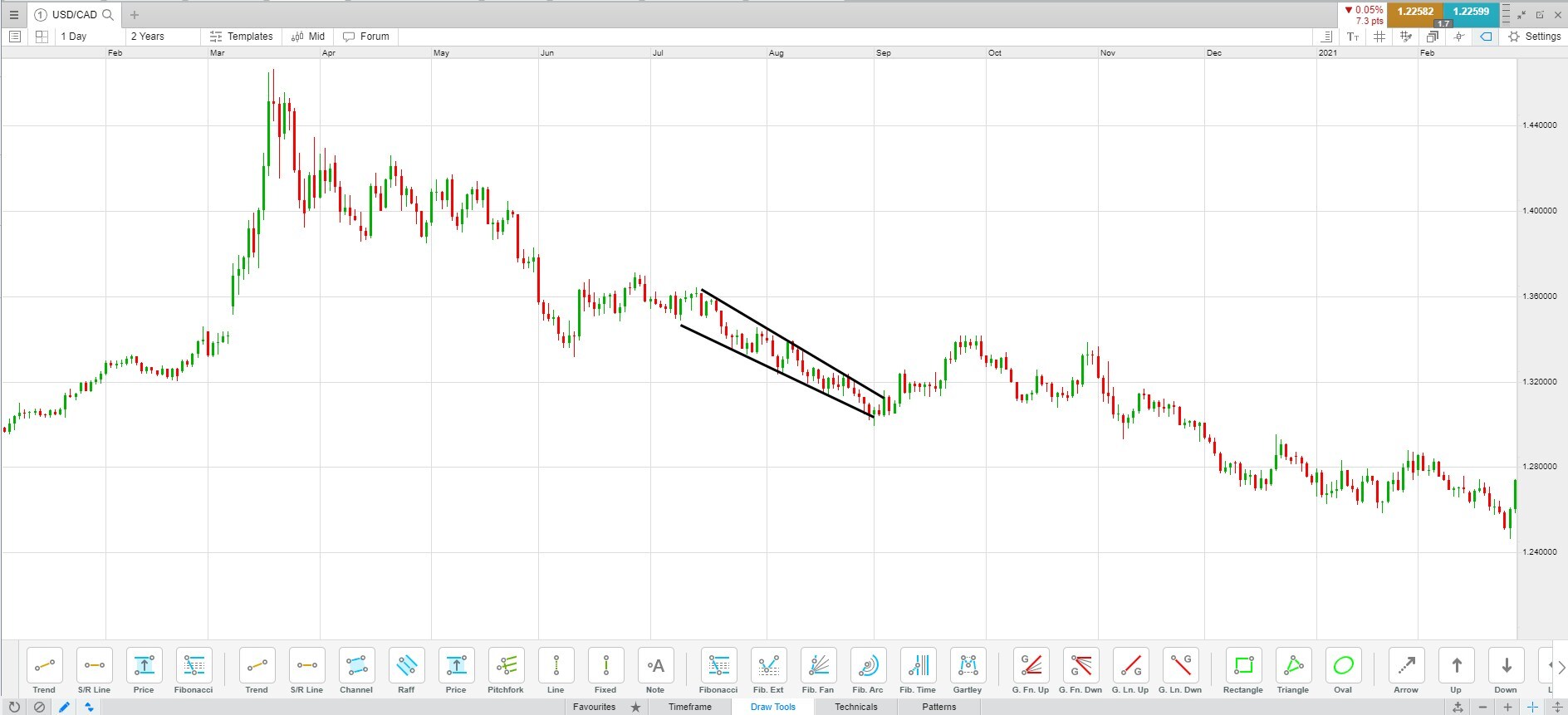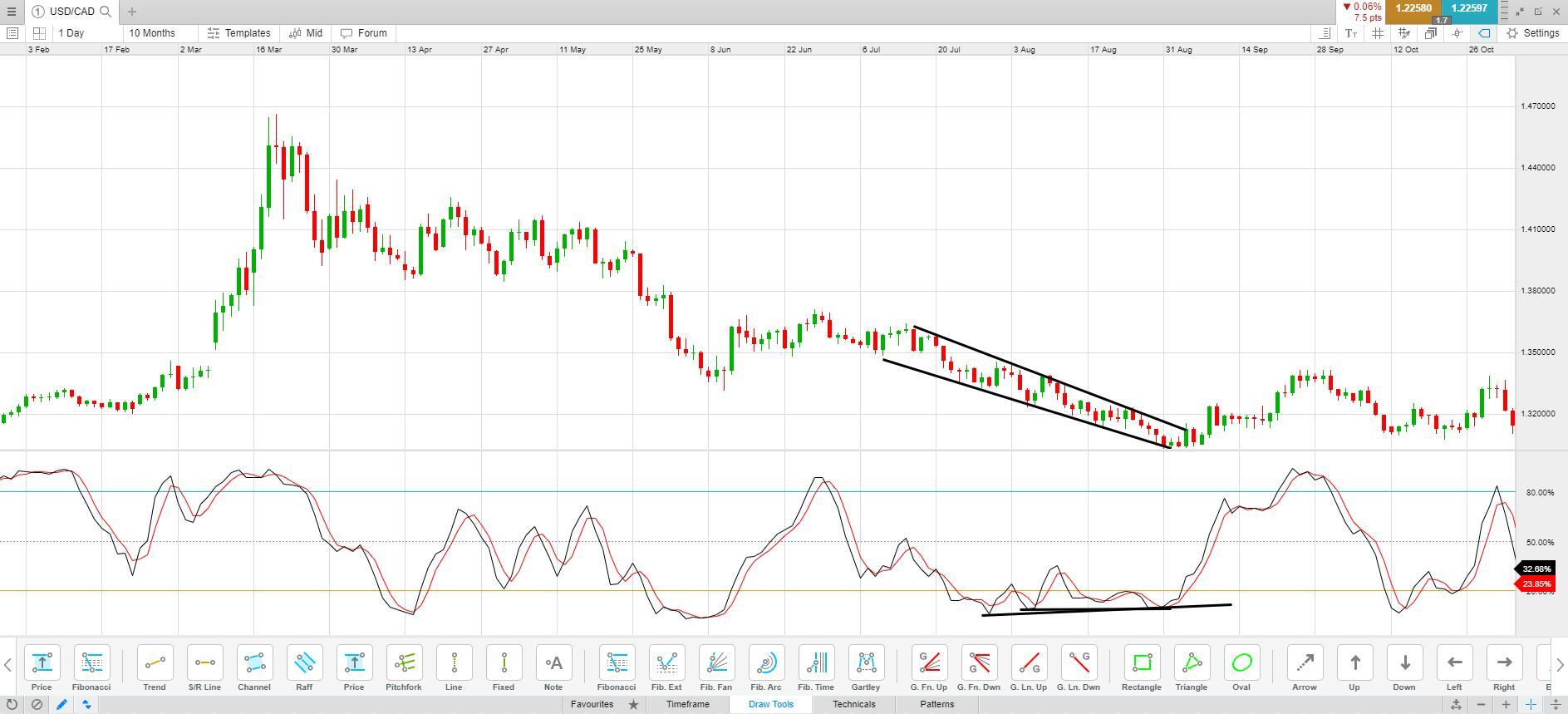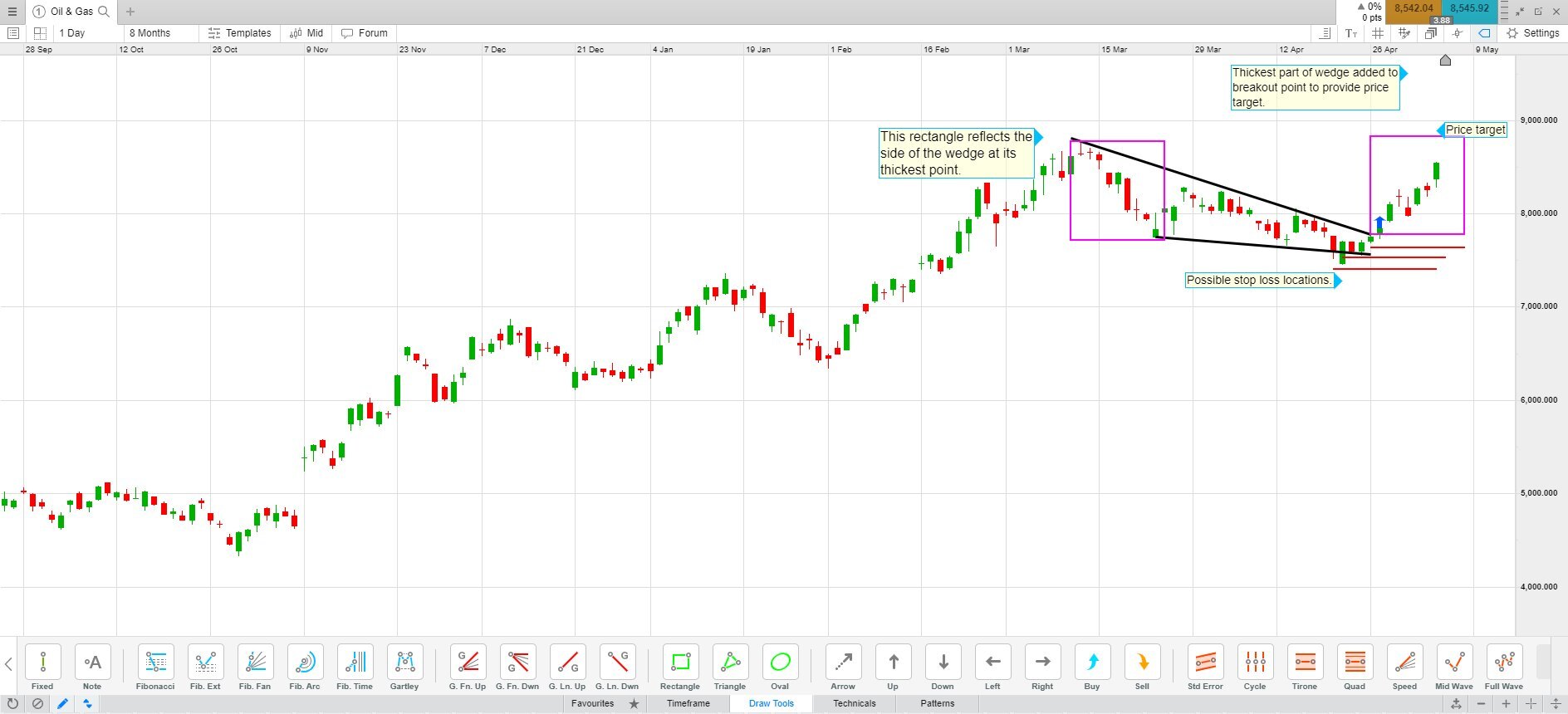Wedges occur when the price action contracts, forming a narrower and narrower price range. If trendlines are drawn along the swing highs and the swing lows, and those trendlines converge, then that is a potential wedge.
Wedges can be rising or falling. They can also be angled — for example, where there is a downtrend or uptrend and the price waves within the wedge are getting smaller.
Here’s an example of a falling wedge in an overall uptrend, which uses the Oil & Gas share basket on our Next Generation trading platform.















